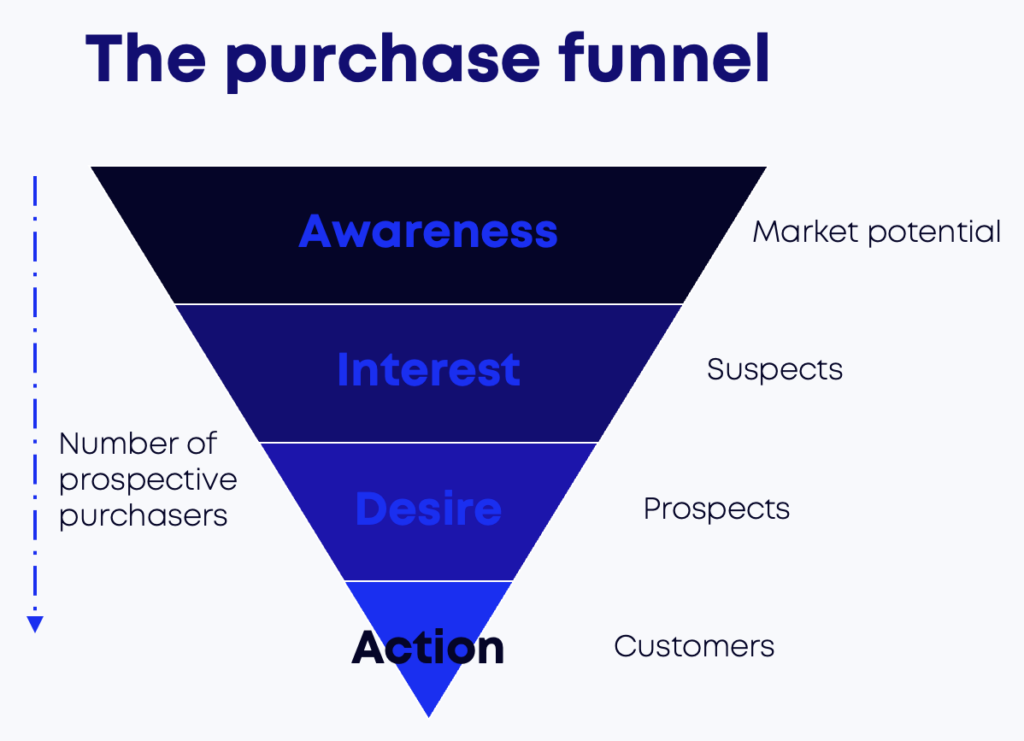Understanding what your marketing is doing for you is important. Some might argue it’s paramount, and [no surprise] you won’t get any argument from us! However… today I want to touch on a big pet peeve of mine in the marketing industry.
What drives me nuts in the data world is oversimplification. Ones & Heroes™ is all about simplifying the complex (it’s literally one of our core values) because we are big believers that simplification improves understanding and makes topics more accessible to more people- which is always a good thing. Oversimplification is different. Oversimplification is withholding or obscuring important details that change context or meaning, leading to misunderstandings.
In marketing, the gravest example of this is attribution modelling. To keep us all on the same page (and help with Data Fluent’s SEO) let’s say attribution is a deterministic[1] modelling approach that connects observed marketing touchpoints to specific customer actions (like sales or form submissions). Multi-touch attribution takes it a step further by describing a breadcrumb trail of these touchpoints, helping marketers understand how different marketing activities relate [or not] to those customer actions.
It’s become the go-to method for measuring marketing effectiveness for a few reasons.
- it’s smart
- it’s a straightfoward concept that’s easy to understand
- it’s outputs are simple and clear
Attribution modelling was popularized by Doubleclick (acquired by Google), with their last-click modelling and later with the explosive rollout of their multi-touch attribution models. For over a decade this meant that you could measure exposures of a campaign across various digital channels over weeks or even months and create a mapping (sometimes referred to as a “customer journey”)[2] of customers’ path to purchase. This was a big boon to media and marketing agencies looking to pin an ROI to their work.
Here’s the problem though…
Attribution was never intended to be the *only* means of measurement. Being deterministic[1] in nature means it only processes observed data. This is an obvious problem for non-digital channels like TV, radio, cinema ads, etc. where very little observational data is available and no engagement or action measurement possible. But it was fast to implement, easy to explain, and gave trusty numbers marketers could take action on. So, over the last ten years [arguably correlating with the emerging generation of marketers who only knew or saw attribution measurement to the exclusion of other methodologies][3] the term “attribution” has become synonymous with “measurement” and “effectiveness”.
Enter the golden hammer
The phrasing may vary depending on where & when you first heard it. For me it was as a kid in the 80’s: “if you just have a hammer, everything starts to look like a nail.” That’s referring to the ‘law of the instrument’; aka ‘the golden hammer’.
The law of the instrument, law of the hammer, Maslow’s hammer, or golden hammer is a cognitive bias that involves an over-reliance on a familiar tool. Abraham Maslow wrote in 1966, “If the only tool you have is a hammer, it is tempting to treat everything as if it were a nail.”
– Wikipedia
And this is what’s happening in so many organizations around the world. The conflation of attribution and measurement, and the misunderstanding that these are the best or only ways to measure marketing performance. Not only does attribution not capture the whole marketing picture – it’s not even trying to. By design.
Why is this my biggest pet peeve? Because I’ve seen so many companies & marketing teams inflict self-harm by relying too heavily (or worse, exclusively) on attribution-based decision-making. Basically, the pattern usually follows this pattern:
- Someone finds out there’s a measurement tool that can tell them what the last observed chain of marketing touches were that lead to a sale.
- They start using it and see how easy it is to get an ROI calculation, fractionalizing it across the touch-points.
- They start using all the fancy integrations for optimizing their media spends in-flight to these attribution-based ROIs.
- Channels that don’t support the attribution (either walled gardens or non-digital channels) are put under pressure to show attributed sales and revenue.
- When they ultimately can’t, budgets are shifted to attribution-measured channels (this is also where teams start calling non-attributed channels “unmeasurable”). The business is now hyper-focused on lower-funnel activity.[4]
- There’s a period of excitement as optimizations drive great results.
- As other channels (esp. brand-centric ones) atrophy, the upper-funnel dwindles. Costs of conversions in the remaining channels climb as they are no longer supported by the unattributed channels.
- Peak efficiency in attributed channels is reached, but scale is no longer possible. By this time, the business has developed a culture dependent on attribution and can’t actually see the way out of the challenge marketing now faces. Trust in marketing (in general) begins to erode.
- Bad things start to happen.
All marketing teams that avoid brand-building and only invest in attributable marketing end up in the same place – with no exception that I’ve seen in all my years of experience. They build an operating model and P&L that becomes addicted to an unsustainable marketing program. Scale & efficiency are opposing forces, and the most efficient marketing activity for scale is [usually] the least attributable. Not just because it may not be digital – but because the work of brand campaigns is to prime users to be more responsive to other campaigns. It’s basically a tale of the unsung heroes in attribution-dominated conversations.
When all you know is attribution, then every measurement problem looks like a breadcrumb trail. Unfortunately that’s not how marketing works.
me, speaking to anyone who’ll listen
The good news is that there is a counterbalance to attribution. It’s called contribution measurement[5] and it’s based on econometrics and statistical modelling. Where attribution models attempt to show what touch points lead to a sale, contribution focuses on how different factors (which don’t have to be limited to marketing channels) contribute to overall performance. It’s a macro view that tells you how your TV, radio, cinema, etc. are contributing to the overall performance of your business.

You get to a contribution value from using various statistical methods (econometrics and media-mix-modelling aka MMMM) to analyze how your marketing activity correlates with a higher-order business metric (like gross revenue or cashflow). Where attribution is trying to figure out which ad placement is responsible for a specific transaction, econometrics focuses on statistical relationships between marketing activity and overall sales (think: great for budgeting and multi-channel planning). It considers external factors like seasonality, economic shifts, and even global events that influence consumer behavior. Contribution models provide a bird’s-eye view of the marketing ecosystem, showing how different channels interact and influence each other.
I’m not going to do a technical deep dive here but suffice it to say that this isn’t a new concept, and it lands squarely in the category of “tried and true” measurement. When it comes to answering questions like “is marketing working?” and “should we do something more/less/different?” the holistic approach that contribution uses makes it the right tool for the job.
So, while attribution is what everyone is talking about in social media and measurement chats, I’d say contribution sits in the, “if you know, you know,” category.
Rather than trying to figure out which ad placement is responsible for a specific transaction, econometrics focuses on statistical relationships between marketing activity and a target KPI (like sales) while accounting for external factors like seasonality, competitor behavior, etc.
and, not or
The point of writing this isn’t to convince you to swap one golden hammer for another. The reality is that measurement should be a deliberate coordination of various measurement techniques that, together, provide a full understanding of what’s going on with your marketing.
Here’s a list of typical marketing-related questions and which methodologies we think are best suited to answer them:
| Business Questions | Best Answered by |
| Which ad led to this specific transaction? | Attribution |
| Which content from my marketing tests is most efficient? | Attribution |
| How should I sequence my creative in a digital journey? | Attribution |
| Which creative asset should I use for lower-funnel conversions? | Attribution |
| How do seasonal trends affect our sales? | Contribution |
| How do marketing channels make each other more efficient? | Contribution |
| What is the dollar value that my brand marketing adds to the business? | Contribution |
| How does increased brand activity impact my performance media? | Contribution |
| How is our new marketing channel working for us? | Contribution |
| What happens if we increase our budgets by X? | Contribution |
Prepping for cookiepocalypse
Cookiepocalypse refers to the impending phase-out of third-party cookies by major web browsers like Chrome and Firefox, a move that will drastically change online advertising & user tracking. If you are in the online marketing measurement crowd, you’ve known about it for a few years now, and Google’s repeated delays are becoming comical. Moving away from third-party cookies is driven by growing privacy concerns & regulatory pressures, and will significantly disrupt online marketing – including (and especially) attribution.
Personally, I’m looking forward to the end of all third-party marketing cookies. Not just because I don’t like the idea of them personally, but I think it’ll be a painful but healthy move forward for online measurement in general. Like ripping off a bandage. While there’s always going to be a need for some level of attribution tracking, our knowledge and technology today allow us to solve more problems and answer more questions with less data than we needed before. I look forward to sharing what Ones & Heroes is developing in this space as we shift from finalizing our POC to rolling out an MVP.
Some final thoughts
To wrap up this longer post, I’ll advise you to be wary of anyone who tells you that your marketing budget can be measured exclusively via attribution; or who suggests that measurement without attribution is not real data. That kind of binary thinking isn’t helpful and will set you on the wrong path.
Using attribution for A|B testing and multivariate testing is still a great idea; attribution as a budget-setting tool is a pretty bad idea. Even in a digital-only marketing program, attribution-based measurement will create blind-spots. Come back to this post and revisit the table above if you need a reminder on where to get your answers from.
As I alluded to above, we’re working on some R&D in the integration of ML & AI with econometric measurement and have had a few successful POCs rolled out in real-world use-cases. If that sounds like something you’d want to learn about or even participate in, definitely reach out and let us know. We’re always looking for the next client to push and evolve our suite of solutions in this space.
So, the key takeaways are pretty straightforward:
- there’s more than one way of measuring your marketing
- attribution and contribution are complimentary and used to answer different questions
- MMM’s are just one kind of econometrics measurement
- using the wrong methodology to answer a question introduces bias and blind spots that *will* harm your marketing in the long term
PS: If you find yourself among those who might have succumbed to the trappings of attribution’s golden hammer, don’t fret! You get on-track without having to toss it all out and start from scratch. There’s a path from wherever you are to your ideal measurement setup; if you can’t find it drop us a line and let us know. We’re happy to help!
Footnotes
4. Referring to the universal marketing or purchase funnel used to depict the most general form of a customer journey.




